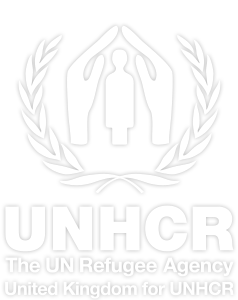Ethiopia
Insecurity, a challenging economic situation and the devastating impact of climate change has exacerbated the need for humanitarian assistance in the country
Hawa, mother of ten, fled violence in Sudan with her children and 80-year-old mother. She now lives in the Kurmuk transit centre in northwestern Ethiopia.
Photo: © UNHCR/Tiksa Negeri
Please help families like Hawa’s who have lost everything.

Protection
Shelter

Food and security
What’s happening in Ethiopia?
Ethiopia has a long tradition of providing protection for refugees and asylum-seekers from neighbouring countries. With almost 1 million refugees, Ethiopia is one of the largest refugee-hosting countries in Africa and the world. Following the eruption of conflict in Sudan, thousands of Ethiopian refugees have also been forced to return.
In 2023, Ethiopia continued to grapple with insecurity in parts of the country, a challenging economic situation with a rising inflation rate and the devastating impact of climate change with prolonged drought and floods.
The prolonged drought had a severe impact on refugees and host communities and significantly increased the number of food-insecure individuals in the country. Between October and November 2023, flooding and mudslides from heavy rainfall and river overflows affected thousands of people. Insecurity has affected the delivery of humanitarian assistance and commercial supplies, including access to several sites where refugees are hosted.
How many refugees does Ethiopia host?
As of April 2024, Ethiopia hosts over 1 million refugees and asylum-seekers and is one of the largest refugee-hosting countries in Africa. The refugee populations grew significantly in 2023, as Ethiopia welcomed close to 140,000 refugees and asylum-seekers, following the outbreak of armed conflict in Somalia and Sudan.
The largest group of refugees residing in Ethiopia is from South Sudan (44 per cent), followed by Somalia (32 per cent), Eritrea (18 per cent) and Sudan (5 per cent).
Around 85 percent of refugees reside in 20 camps and four sites and settlements across the country. The largest populations are hosted in the Gambella Region and the Liban Zone of the Somali Region.
Are people from Sudan fleeing to Ethiopia?
Since conflict broke out in Sudan in April 2023, close to 54,000 individuals in need of international protection crossed the border into Ethiopia, as of April 2024. Due to the continued escalation of fighting in Sudan, it is expected that more refugees will continue crossing the border to seek safety in Ethiopia in 2024.
The Government of Ethiopia’s Refugees and Returnees Service and UNHCR, in close collaboration with regional and local authorities and other partners, established new refugee settlements in the Amhara and Benishangul-Gumuz Regions to provide protection and solutions services for the newly arrived refugees.
Where are Ethiopian families fleeing to?
There are 150,000 refugees and asylum-seekers from Ethiopia in neighbouring countries, such as Sudan, Kenya, Djibouti and South Sudan. Following the eruption of conflict in Sudan, thousands of Ethiopian refugees have returned, with the majority currently residing in the Tigray region in Northern Ethiopia.
What about internally displaced people in Ethiopia?
As of March 31, 2024, there are also roughly 3.5 million internally displaced people in Ethiopia. Conflicts have internally displaced 2.6 million people, whilst natural disasters have internally displaced 900,000 individuals.
What others kind of support is UNHCR providing?
UNHCR’s Ethiopia operation focuses on emergency response to the different internally displaced people situations, addressing protection needs of refugees and promoting their self-reliance in line with the Global Compact on Refugees (GCR).
UNHCR is working with the government to ensure displaced communities are included in national development plans, and to create an integrated assistance programme that supports both refugees and host communities.
UNHCR is also coordinating the provision of healthcare with government partners, enrolling women and children in public universities and schools in coordination with the government and World Bank and providing vital shelter and protection assistance. Recognising the need for long-term sustainability, UNHCR continues to expand access to alternative cooking fuels and solar power for healthcare centres.
UNHCR has only received 13% of its total funding requirement of USD 426 million for its operations in Ethiopia in 2024.
What about gender-based violence?
Women and girls are at heightened risk of gender-based violence (GBV) and other human rights violations, including deprivation, insecurity, abuse and neglect.
In 2023, the increased risks to the newly arrived displaced women and girls (from Somalia and Sudan), the drought and increased food insecurity significantly affected UNHCR’s GBV programming and other protection responses.
To help prevent GBV, UNCHR and its partners have conducted trainings, including how to safely respond to GBV disclosures, where to refer people and how to manage cases; as well as awareness-raising initiatives sharing prevention messages and information on available services.
Where can I access the latest data and reports?
Ethiopia Situation Portal – for latest updates on the situation overall, including UNHCR situation reports, funding requirements and UNHCR’s support for neighbouring countries taking in refugees from Ethiopia.
Ethiopia Operations – for latest on UNHCR’s relief work to protect displaced people inside Ethiopia.

